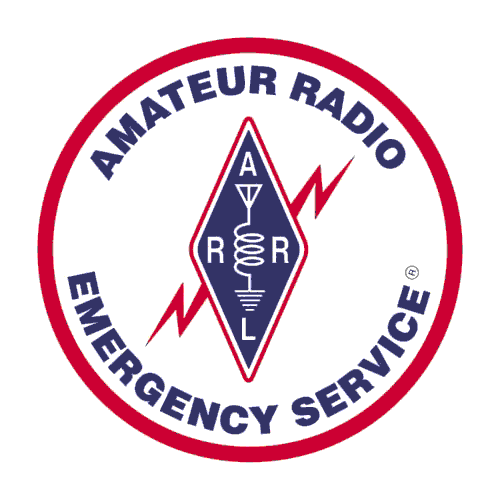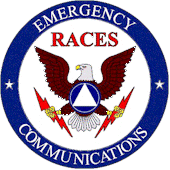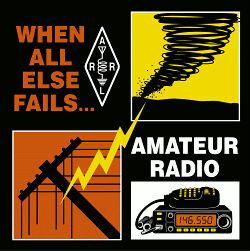About ARES®/RACES
What are ARES® and RACES?
Emergency service is one of the basics of Amateur Radio and there is sometimes confusion about ARES® (pronounced air-ease), the ARRL arm of emergency services and RACES (pronounced race-ease), the government arm of amateur emergency services. The Amateur Radio Emergency Service® (ARES) and the Radio Amateur Civil Emergency Service (RACES) both have very similar goals: to protect life and property during an emergency. Membership in the ARRL or any other organization is not required for either, just a valid Amateur Radio license (Technician or higher for RACES).
In Santa Clara County, the ARES and RACES are organized as essentially one group of people. There are technical and legal differences between the two services, outlined below, but, by and large, it is the same group of Amateurs. Following is a brief description of ARES and RACES.
ARES® - The Amateur Radio Emergency Service

The American Radio Relay League (ARRL) administers ARES (although you do not have to be a League member to participate). ARES provides emergency radio communications to a number of client groups, including local government, the American Red Cross, the Salvation Army, and others.
While operating under ARES we also may provide communication support to public service events.
RACES - The Radio Amateur Civil Emergency Service

RACES is a local or state government service -- there is no Federal RACES. Only compentent authority of a local government civil preparedness agency can activate RACES in times of emergency. In our case, the local government agency is the City of Milpitas and the County of Santa Clara.
During all times that Amateur stations are operating under RACES rules, they may only communicate with other RACES stations, and only for the purpose of conveying official civil-preparedness emergency communications.
RACES is primarily used for non-wartime emergencies which can include natural or technological disasters such as fires, floods, earthquakes, chemical spills, and terrorist events. During times of war (when the President invokes War Emergency Powers), normal Amateur Radio Service operation is silenced and RACES stations are limited to a pre-defined set of operating frequencies that are within the normal Amateur bands.
Participation in ARES and RACES is voluntary and you may quit at any time. You must be pre-enrolled in RACES in order to participate in RACES activities. While it makes sense to join ARES before you are needed, there is nothing to prevent you from offering your services at any time to aid in an ARES response although without some prior knowledge and training you usefulness may be limited. Joint membership in both ARES and RACES is encouraged.
Stations operating under ARES have much more flexibility because the main purpose of ARES is to serve the communications needs of many agencies, not just the government. RACES is structured and rigid and must be activated by a local civil defense official; ARES can be activated by an ARRL official such as the local ARRL Emergency Coordinator (EC).
Using the same operators and the same frequencies, an ARES group also enrolled as RACES can "switch hats" from ARES to RACES and RACES to ARES to meet the requirements of the situation as it develops. For example, during a "non declared emergency," ARES can operate under ARES, but when an emergency or disaster is officially declared, the operation can become RACES with no change in personnel or frequencies. In general, ARES is organized to serve the public, and RACES is organized to serve the government.
More information can be found at the ARES® vs RACES FAQ.
Last Updated: September 26, 2018
